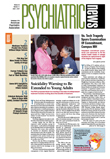The Medicare Hospital Insurance Trust Fund is expected to be exhausted in 2019, according to this year's Medicare trustees report.
That's one year later than last year's report estimated the fund would be depleted. This change results from slightly higher projected income and slightly lower projected expenditures than previously expected, according to the report.
Despite the slightly brighter news, the trustee's report again forecasts grim tidings for the 43-year-old entitlement program.
The following key findings were contained in the report:
•
The hospital insurance annual cost rate is projected to increase from 3.01 percent of taxable payroll in 2006 to 11.79 percent in 2081.
•
Part B outlays were 1.3 percent of gross domestic product (GDP) in 2006 and are projected to grow to about 4 percent by 2081. However, these cost projections are understated, according to the trustees' report, because they are based on an assumption that physician payments would be cut dramatically in accordance with the law; in recent years Congress has intervened to circumvent those cuts.
•
Part D outlays are estimated to increase from 0.4 percent of GDP in 2006 to about 2.4 percent by 2081. Initially, these outlay projections are significantly lower than those shown in last year's report. The primary reason for the reduction is that the 2007 prescription drug plan bid submissions were about 10 percent lower than in 2006. In the long range, the outlay projections return to, and eventually exceed, the prior projected level.
“These projections demonstrate the need for timely and effective action to address Medicare's financial challenges,” the report stated.“ Consideration of such reforms should occur in the relatively near future. The sooner the solutions are enacted, the more flexible and gradual they can be.”
AMA Reacts to Payment-Cut Threat
Health and Human Services Secretary Mike Leavitt said in a statement that the report points to the need to act quickly and efficiently to strengthen and improve Medicare.
“Medicare reminds us of the great dilemma of health care—the things that are priceless are not price free,” Leavitt said. “We are making progress toward finding peace between the two—toward addressing long-term solvency while providing up-to-date care. But today's report shows us that we have a long way to go.”
The AMA, responding to the threat to physician payment implicit in the trustees' comments about expected growth of Part B expenditures, warned against impending reimbursement cuts.
“Arbitrary, drastic payment cuts to the physicians who are the foundation of Medicare are not the answer,” said AMA Board Chair Cecil Wilson, M.D. “We need congressional action to stop next year's 10 percent Medicare physician payment cut that undermines the physician foundation of Medicare and harms seniors' access to care. Medicare cuts to physicians are now projected at 41 percent over nine years, while practice costs will increase about 20 percent over that time.
“One thing Congress can do immediately to strengthen the Medicare program for future generations is to level the playing field between Medicare Advantage [the private option] and Medicare fee-for-service programs by paying the same amount for health care under each program,” Wilson said.“ The commission that advises Congress on Medicare, MedPAC, has called for financial neutrality between Medicare fee-for-service and Medicare Advantage plans.
Funding Warning Triggered
In addition to the dire warnings about future insolvency, the trustees for the second year in a row issued a determination of “excess general revenue Medicare funding.”
Under the 2003 Medicare Modernization Act (MMA), such a determination is triggered if Medicare is projected to draw more than 45 percent of its total funding from general revenues—as opposed to “dedicated” revenues such as Medicare payroll taxes—within a seven-year span.
The report projects that the 45 percent threshold will be exceeded by 2013.
The determination of excess general revenue funding in turns triggers a“ Medicare funding warning” under the MMA. A Medicare funding warning requires the president to propose legislation to respond to the issue within 15 days after the release of, in this case, the Fiscal 2009 budget, which will be released in early February 2008. The law requires Congress to consider the president's proposals on an expedited basis.
Several observers have said, however, that the 45 percent threshold is arbitrary and unrelated to the solvency of the program.
Senate Finance Committee Chair Max Baucus (D-Mont.) said in a statement,“ Rapid growth in health care costs is causing mounting pressure on public and private payers alike. I am concerned, however, that the 'Medicare funding warning' in this report will prompt the president only to propose slashing Medicare spending rather than to focus on the underlying factors driving costs throughout the health system. Any presidential proposal resulting from this warning should address the fundamental issues plaguing the system as a whole: health coverage and health care costs.”
Rep. Pete Stark (D-Calif.), chair of the House Ways and Means Health Subcommittee, said the 45 percent provision is “an arbitrary threshold designed to scare people.”
Families USA, an advocacy organization, responded to the trustees' report with a detailed document titled “Medicare's Phony Problem: The 45 Percent Threshold,” which explains that the 45 percent threshold has little or nothing to do with the overall solvency of the program.
“Medicare now draws more of its funding from general revenues (as opposed to payroll taxes and premiums) for two main reasons: (1) the introduction of the Part D drug program and (2) an overall shift in the way health care is delivered from inpatient hospitals to outpatient settings.”
The Families USA response is posted at<www.familiesusa.org/assets/pdfs/medicare-45-percent-threshold.PDF>; the Medicare trustees report is posted at<www.cms.hhs.gov/ReportsTrustFunds/downloads/tr2007.pdf>.▪
